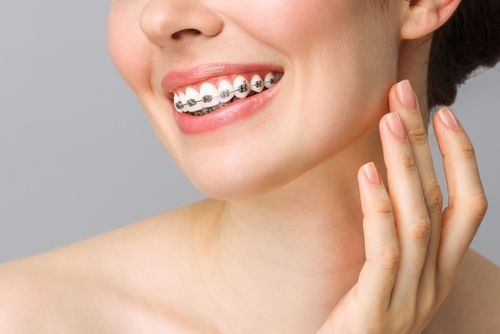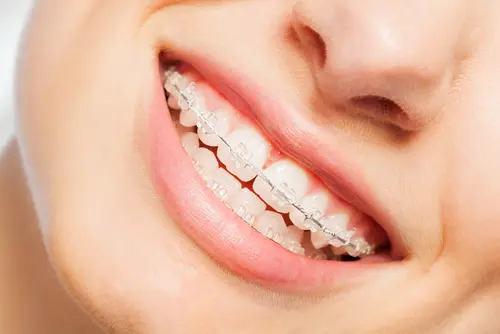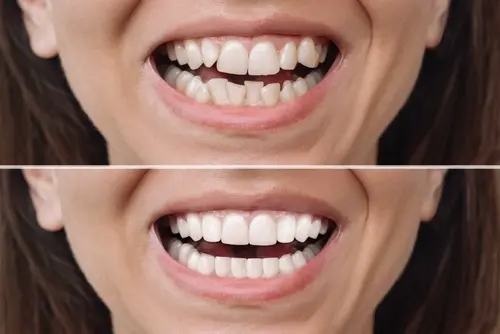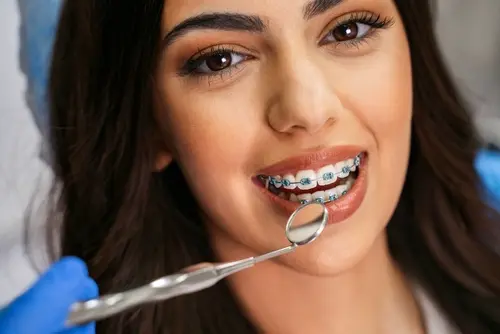Braces FAQs
Braces are so ubiquitous it’s easy to assume there isn’t much to learn about this orthodontic treatment. But recognizing a mouthful of braces and understanding how this treatment can work for you are two different things. Get answers to some of your biggest questions about orthodontic care in these braces FAQs from Mariana Orthodontics.


What do braces feel like?
Braces inevitably cause a little discomfort at the start of treatment and with every adjustment. They are designed to move tooth crowns and roots which of course causes pressure and tenderness, but the feeling passes quickly. As for the hardware on your teeth, there will be a brief period when the brackets rub against the soft tissues of the mouth and dental wax is needed to reduce the irritation until calluses form and protect the cheeks and lips.
Are there different types of braces?
There are different types of conventional braces that most patients can choose from:
- Metal braces: These are the braces everyone is familiar with. They’re reliable, strong, and can be colorfully accessorized by their elastics. The brackets are smaller and less noticeable than they once were.
- Ceramic braces: Also known as tooth-colored braces, ceramic braces blend into the teeth so they’re less noticeable – even the rubber bands are clear. The brackets are known to be more fragile than metal braces.
- Clear braces: Clear braces are as close as a patient can get to Invisalign without wearing the clear aligners. The clear brackets and tooth-colored archwires deliver a truly discreet appearance, but keeping them clean is a must if you want to reap the clear benefits.


What problems do braces fix?
There was a time when metal braces were the only solution for orthodontic problems, and they continue to improve in form and function to fix any alignment issue that a person is dealing with, including:
- Overbite
- Underbite
- Open bite
- Gapped teeth
- Crooked teeth
- Misalignment
- Overlapping teeth
What will change when I have braces?
Anything having to do with orthodontics involves change. That’s the nature of this field of dentistry. But it’s all positive change, with a few inconveniences along the way to reach a straight, healthy smile.
- You may talk differently at first. This side effect will wear off quickly.
- Soft foods will be your friend after first getting braces and after every adjustment.
- You will have to avoid hard or sticky foods that can get stuck in your braces or break the brackets like candy, gum, and popcorn.
- It’s essential to brush and floss multiple times a day to prevent stains and cavities from developing.


How long does it take to get braces?
The process of getting braces can take an hour or two. The actual adherence of the brackets to your teeth is fast, but the real work begins when the archwire is put in place and adjustments are made. Here is what to expect:
- Bonding agent applied to the teeth.
- Brackets placed on the bonding agent.
- Threading the wire through the brackets and connecting it accordingly.
- Securing the wire in place with elastics.
- Making adjustments to move teeth where they need to go.
It doesn’t hurt to get braces, but you are likely to have a sore mouth after the treatment as your teeth adjust to all the new hardware in your mouth.
How do I know if braces are right for me?
The only person who can determine if braces are right for you is an experienced orthodontist. Schedule a consultation with Mariana Orthodontics to get a complete evaluation, receive a diagnosis about issues that may need to be corrected, and learn about possible treatment plans. This appointment is relatively brief and includes x-rays and an oral exam.
Contact us today to learn more about your oral health, misalignment, and what’s possible for your smile.




